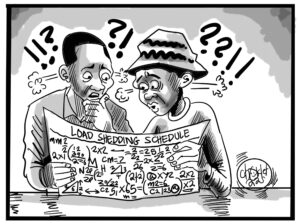Financial analyst Maambo Hamaundu says it will take a miracle to rescue the kwacha’s continued weak performance against major currency convertibles because Zambia’s huge debt levels remain challenging.
The local currency maintained trading at K13.00 per dollar in the last one week after depreciating from holding firm at K12.85 per dollar in the last one month.
In an interview, Hamaundu projected that the kwacha would continue to depreciate against major currency convertibles due to Zambia’s huge debt stock and that it could only be rescued by a miracle.
He added that the local currency might even further depreciate further to hit K13.50 per dollar due to the escalating debt stock, which required excessive amounts of dollars to service repayments.
Zambia’s external debt stock leaped to an unprecedented US $10.23 billion by June 30, 2019, from US $10.18 billion as at March 31, 2019.
“So, it’s really not something that we can smile about, the projections are not really that good, but of course, miracles have happened in this country and maybe we will have a miracle, which will happen but minus a miracle, I think the indications are that we will have a weak currency,” Hamaundu said.
“But generally, with the way things are now, I think that, ultimately, the general direction will be that of depreciation. I expect the kwacha to trade above K13.00 (per dollar) as the year progresses because as at now, I think it’s around K13.10, K13.20…it is not a far-fetched idea that it could even go up to even K13.50 or thereabout. So, the direction generally, will be that of a weakening currency as opposed to a strengthened currency because when you even project further with this aspect of debt, you begin to ask yourself a question to say: ‘what do we need to strengthen our currency?’ We need to invest in production, and do we have money as a country to invest in manufacturing or to invest in production infrastructure. Will there be money available in the 2020 budget, for instance, to invest in economic activity and the answer is highly unlikely because I think most of the money will be going towards debt servicing and towards meeting salaries and wages for civil servants and general recurrent expenditure.”
He, however, noted that it was difficult to predict that a kwacha appreciation or depreciation because circumstances change abruptly.
“On the Zambian market, it’s a bit difficult to ascertain whether to expect an appreciation or depreciation because circumstances or situations sometimes change abruptly. I say so, in June, there was a time we saw the kwacha trading as low as K12.50 (per dollar); if you asked a question to say: ‘did you expect the rate to go that low then?’ I think many will tell you to say it was not expected, but eventually it went back to the levels of K13.00, which is what was generally perceived as a normal rate,” he explained.
“But like I said, sometimes we tend to have shocks within the system where you experience a rate that is not expected and perhaps this is also a depiction of the size of our economy because at times you can have just a minimal injection of foreign exchange into our economy, which can affect our rate of exchange either positively or negatively.”
He added that the Zambian economy will suffer more with the continued weakening of the local currency because the country remained a net importer.
“It’s not necessarily a good thing that we will have a weak currency because you know that we are a net importer, and we import more than we export, so that would mean the price of goods and services will continue to go up; it means that it will continue causing misery in the lives of ordinary people because directly or indirectly, we are dependent on foreign goods and we are supposed to buy them. But where do we get the money from and business is not thriving for you to make a profit and, therefore, buy goods when people are not in jobs and so on,” said Hamaundu.




















One Response
Take time to ignore low commodity prices. Take time to ignore hydro power deficit. Take time to ignore diversification gap. Take time to ignore calculations. Take time to ignore graphics. Take time to ignore rumor.